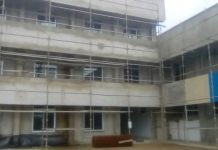Africa-Press – Malawi. Malawi’s chances of achieving a low middle income status by 2030 now hang by a thread, the 2023 Malawi Implementation Plan 1 (MIP-1) Progress Report by the National Planning Commission (NPC) has shown.
The report, released in Lilongwe Wednesday, shows that at the current fragile trend of economic growth, Malawi will reach middle-income status by 2045.
It notes that if the local economy was to start swelling consistently by six percent per annum for the next six years, Malawi would reach middle-income status some six years later in 2036.
According to the report, if Malawi is still determined to reach the middle-income status by 2030, then it must achieve an average annual growth rate of 10.6 percent.
The income groupings use Gross National Income (GNI) per capita (in US dollars, converted from local currency using the Atlas method) following the same methodology used by the World Bank to determine its operational lending policy.
For the current 2025 fiscal year, lower middle-income economies are those with a GNI per capita, calculated using the World Bank Atlas method, of between $4,516 and $14,005.
Malawi’s GNI per capita was reported at around $1820 last year.
NPC Director General Thomas Munthali cited a number of factors that have resulted in Malawi’s road to prosperity by 2030 getting tougher.
He cited unsustainable public debt, persistent exogenous shocks, implementation capacity deficiencies, sheer negligence and corrosive impacts of corruption as some of the factors choking Malawi’s ability to achieve the 2030 lower middle income economy target.
According to Munthali, sometimes Malawi is very slow in service delivery, especially in the public service, a development which bleeds corruption.
This, he said, has resulted in some potential investors relocating their investment interests.
The NPC chief said time has come for radical transformation and a business unusual type of approach if the economic fortunes of the country are to change for the better.
“We need to focus on wealth creation and self-reliance interventions: Investment in productive sectors include large-scale mining, megafarms, agro- processing, tourism and manufacturing (ATM2).
“Catalyse and incentivise the private sector through the actualisation of the developmental state philosophy and the creation of an enabling environment.
“Accelerate implementation of the catalytic interventions. Reprioritise and focus on a few key interventions identified to have the greatest potential for wealth creation and strong linkages with other sectors for quick economic recovery,” he said.
He added that there was a need to strengthen oversight mechanisms in the implementation of projects to ensure that development projects are implemented timely, bottlenecks are identified and addressed promptly and stakeholders are held accountable.
“Ensure completion of aging projects to avoid price escalations and changes of scope
“Full operationalisation of the key institutions that are supporting activation of the developmental state philosophy e.g. capitalisation of MDCHL, mining company and Admarc to catalyse investments in the ATM2,” he said.
NPC Chairperson Richard Mkandawire said the progress report is not just a catalogue of the progress registered since the launch of the MIP-1, but also provides a platform to celebrate the success achieved so far and ignite the dialogue on how to troubleshoot the bottlenecks that have affected progress of other interventions.
For More News And Analysis About Malawi Follow Africa-Press






